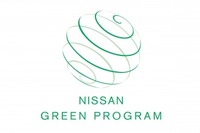Nissan to save 21 million litres of water at Barcelona plant
 Nissan Motor Co.’s productive manufacturing plant in Barcelona will save 21.6 million litres of water in its paint shop in 2008, thanks to a new water recycling process now installed.
Nissan Motor Co.’s productive manufacturing plant in Barcelona will save 21.6 million litres of water in its paint shop in 2008, thanks to a new water recycling process now installed. This improvement – a 20 percent reduction in water consumption over 2007 – is an integral element of the Nissan Green Program 2010, a global program designed to reduce the company’s impact on the environment. The plan calls for Nissan manufacturing plants around the world to reduce emissions of CO2 and other contaminants and to increase the percentage of recycling by the end of the decade.
Barcelona’s water saving initiative is the result of changes to the vehicle painting process. In the past, water used to wash the bodies-in-white before painting was pumped to a purifying installation after use, from where it was sent to the city’s main sewerage system.
Now water used to wash almost 900 new bodies each day is filtered on site and immediately re-used, thus reducing the quantity previously sent to be purified by a dramatic 4,000 litres per hour.
As well as saving water, the new ‘kidney’ filtrate system eliminates the energy demands of the old purifying process and lowers the amount of sediment build up by around 79 tonnes annually. At the same time it maintains the quality of the paint process.
Saving water is not a new phenomenon at Nissan, however. Nissan in Spain has long tried to save water in its facilities and since 1998 has reduced consumption at the Zona Franca, Barcelona, plant by more than 50 percent.
Nissan has three production centres in Spain – in Barcelona, Ávila and Cantabria – where it builds 4x4s, vans and trucks. Models include Pathfinder and Navara 4x4s and Cabstar and Atleon light trucks. Nissan also builds the highly successful Primastar van, which is also sold as the Renault Trafic and GM Vivaro.
In addition, Nissan Spain has R&D centres for engine and LCV development, as well as parts and distribution centres. Barcelona is also home to the sales headquarters for Spain and Portugal.
In total, the company employs about 6,300 people in Spain and in 2007 produced almost 223,000 vehicles with sales reaching 68,528 units.

